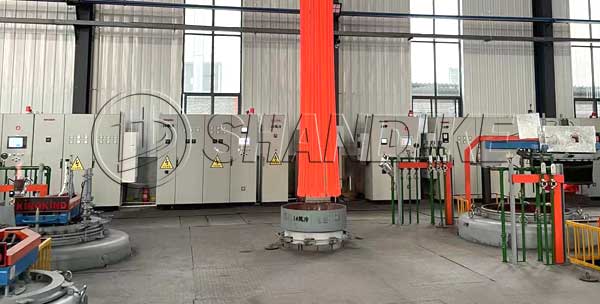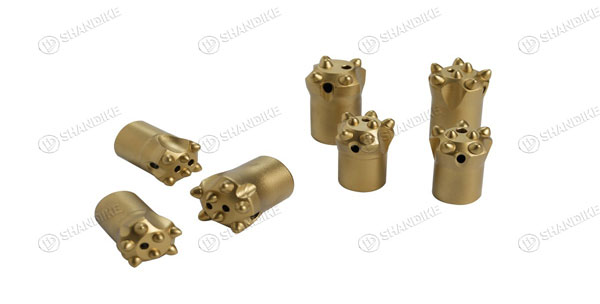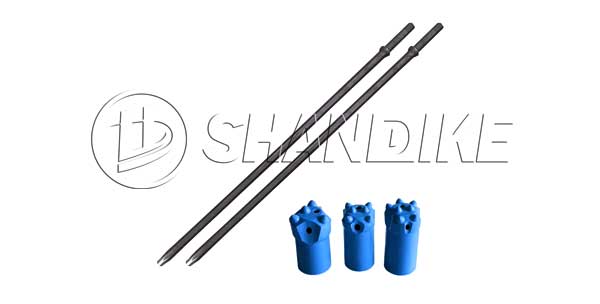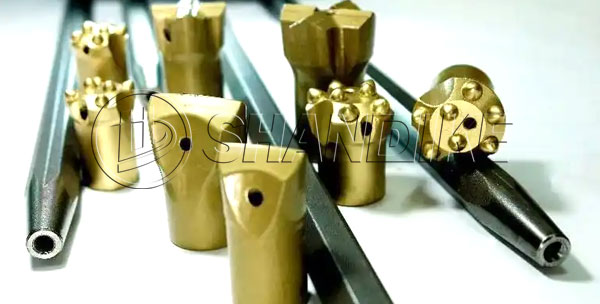The purpose of carburizing drill rods during the production process
The main purpose of carburizing the drill rod of a rock drill during the production process is to optimize the balance between the surface and core properties of the material, and improve its durability and reliability under harsh working conditions. The following is the specific purpose and technical analysis of carburizing treatment:

1. Enhance surface hardness and wear resistance
-Mechanism: Carbonization is achieved by infiltrating carbon elements into the surface of the drill rod, forming a high carbon layer (usually with a carbon content of 0.8% -1.2%), followed by quenching and low-temperature tempering, resulting in the formation of a high hardness martensitic structure on the surface.
– Effect : The surface hardness can reach HRC 58-64, significantly improving the wear resistance, addressing wear problems caused by friction with rocks, and extending the life of drill pipes.
2. Maintain heart resilience to withstand impact
-Material selection: The drilling rod matrix is usually made of low carbon steel (such as 20CrMnTi), which has a low carbon content in the core after carburizing (about 0.1% -0.3%), low hardenability, and retains a tough structure (such as ferrite+pearlite).
-Performance Balance : The high toughness core can absorb impact energy, prevent brittle fracture of drill rods during high-frequency impact operations, and adapt to the high dynamic load conditions of rock drills.
3. Optimize residual stress distribution
-Process influence : The volume of the carburized layer expands during quenching, forming compressive stress on the surface, offsetting the tensile stress during operation, and delaying crack initiation. – Fatigue resistance improvement : Surface compressive stress state can increase the bending fatigue strength of drill pipes (by about 30% -50%), reducing fatigue failure caused by cyclic stress.
4. Economy and process adaptability
-Cost effectiveness: Compared to overall high alloy steel, carburizing treatment reduces material costs while ensuring performance, making it suitable for mass production.
-Depth control: The depth of the carburized layer is usually designed to be 0.8-1.5mm (adjusted according to the diameter of the drill pipe), taking into account wear resistance requirements and avoiding excessive thickness of the brittle layer.
5. Other auxiliary advantages
-Improved anti bite performance: The high hardness surface reduces adhesive wear when in contact with rocks.
-Dimensional stability: Low temperature tempering (180-220 ℃) reduces deformation while maintaining hardness, ensuring the geometric accuracy of the drill rod.
Precautions
-Process control: Accurate control of carburizing temperature (900-930 ℃), time, and carbon potential is required to avoid grain coarsening or excessive carburizing leading to brittleness.
-Subsequent processing: Grinding is required after carburizing to eliminate the oxide layer and ensure assembly accuracy.
Through carburizing treatment, the drill rod of the rock drill achieves a gradient performance of “external hardness and internal toughness”, and its comprehensive service life can be increased by 2-3 times compared to untreated drill rods. It is a key process that balances performance and economy.



